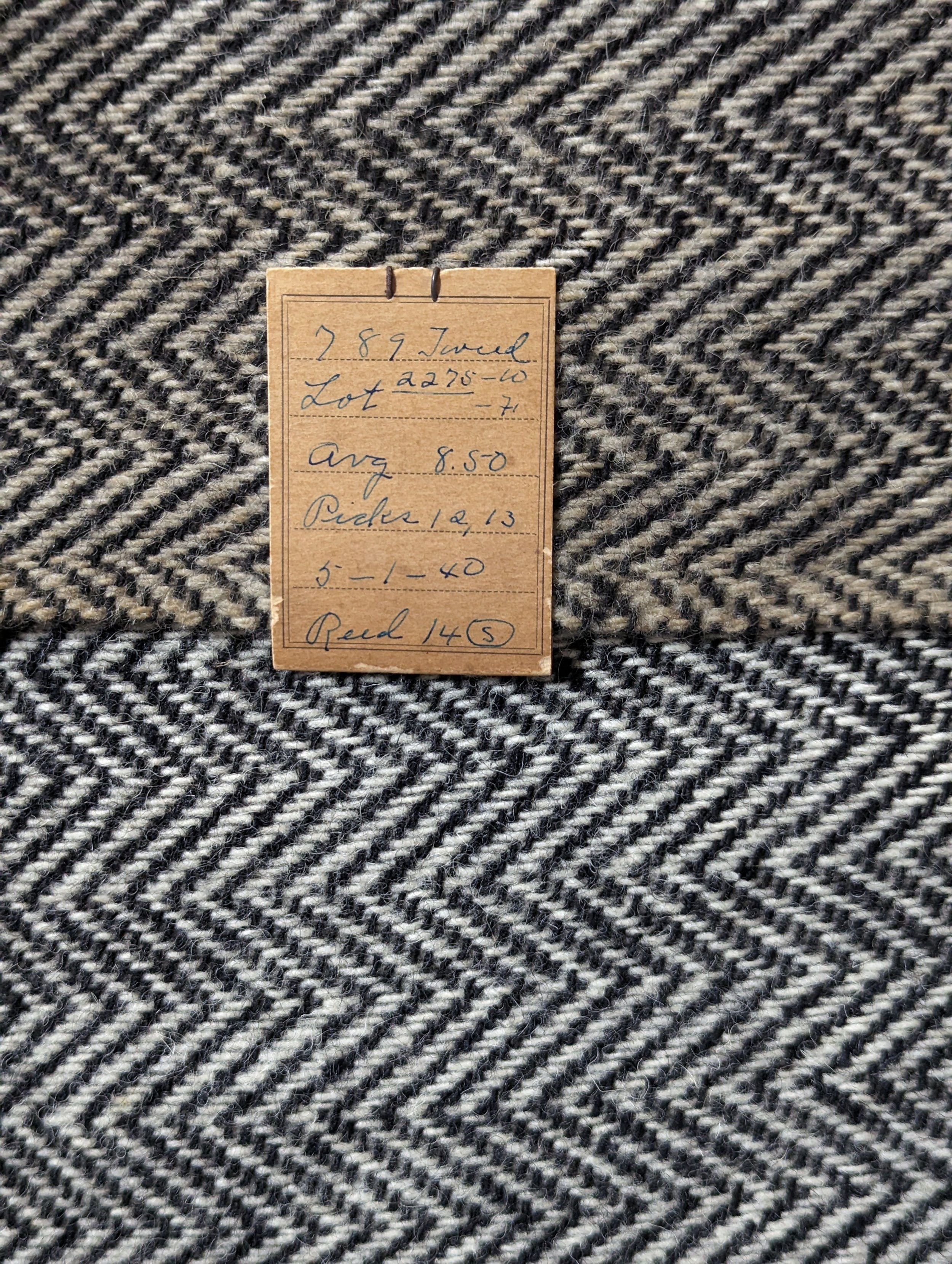In 2022 the museum manager at Grovewood Village asked me to take a look at the old loom in their Homespun Museum to see if there might be a way to get it working again, just to show visitors how it works. I am lucky enough to be the bookkeeper over at Grovewood Village so I tend to be on hand for these things. This fabulous old loom was regularly used for demonstrations into the early 2000s but had been unused for years and in need of repairs.
The loom is one of the original 40 looms used in making handwoven homespun cloth at Biltmore Industries. It was built by Biltmore Industries woodworkers in the early 1900s and based off of a loom used for making tweed by weavers in Killin, Scotland. For my weaving nerds - this loom is a four shaft counter balance loom. It’s made of white oak and weaves about 40” wide cloth and has a flyshuttle. (Biltmore Industries began in 1901 as a craft school in Asheville, NC and eventually grew into a homespun shop producing as much as 950 yards of cloth per day and employing nearly 100 workers - you can read more here!)
Most of what needed repair were the leather straps that hold the shafts in place and that are attached to the treadles. The flyshuttle mechanism was also very sticky and needed lubricating. The loom is now operational again and I’ve had the pleasure to weave on it for visitors to the museum. I especially love when kids come in and ask questions — it’s a huge, noisy machine and leaves quite an impression!
Archival photo of Biltmore Industries weaver at the loom making woolen cloth
The loom restoration project led me down a gigantic rabbit hole which I am pleased to have found myself in. Initially it led me towards wanting to catalogue and digitize the samples that are a part of the collection of the museum. This is a project that I’m excited to say I’ve started and will take some time — I’ll be sharing more here as that progresses.
Looking through the vintage samples made me wonder about reproducing the fabrics…tweed is not as sought after these days (especially in the south) as it was when Biltmore Industries was in it’s heyday (1920s-1940s) so I decided I would explore blankets/throws and neck ties. Both things are great items to make with wool and are well suited to the patterns and weights that used to be produced here.
As I continued to (and continue to) research at UNCA Special Collections (where there is a treasure trove of local historical information) and at the Gallery’s private collection, I have learned that the Industries also sold blankets, purses, ties, and sweaters in addition to their yardage. Yardage for suiting and coat material was their specialty.
Archival photo of Biltmore Industries educational and sales display
As all of these wheel were turning in my head, I came to find out that Heath Towson of Mountaineer Motor Tours was looking for a blanket that he could keep in his Ford Model T for tours in case passengers get chilly. I told him about my idea to make blankets using the original Biltmore Industries patterns — Health is an excellent local historian and is a part-time docent at the museum — and my ideas now have traction.
Heath picked out a sample - 789 Tweed - the very first Biltmore Industries recreated handwoven homespun blankets will be woven in the same pattern.
Image of Biltmore Industries sample dated 5-1-1940 “789 Tweed”, visible discoloration near the label
There are other projects in the queue related to this work, other samples we want to recreate and so much more to write about. To be continued…



